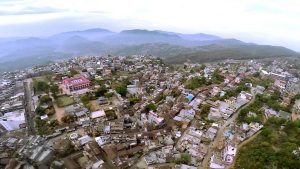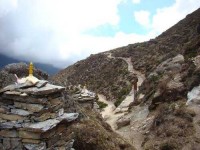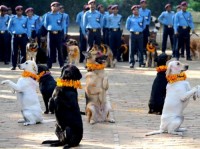Banke National Park
Established on 12 July 2010 as the tenth national park in Nepal, Banke National Park (BaNP) reflects the commitment of the Government in Biodiversity conservation at the landscape level. This national park was also recognized as the gift to the earth in 1998.
Linked with trans-boundary landscape that joins Suhelwa Wildlife Sanctuary in India through national and community forests towards south, it is also joined with Bardia National Park (BNP) towards west that links further with Katerniaghat Wildlife Sanctuary in India through Khata corridor, national forest and community forests. About 35,712 populations residing in the 4,861 households in the bufferzone consist mainly of indigenous Tharu community, Brahmin, Chhetri, Magar, Tamang, Majhi and Gurung communities and the ninety percent of the economy of these people depends on agriculture with the remaining ten percent depending on trade and labor.
Banke National Park was established with the objective of conserving endangered species of wild flora and fauna and their habitat, promoting eco-tourism, facilitating buffer zone for resources management, livelihood promotion, income generation and community development activities and strengthening trans-boundary biological corridor.
The three distinct seasons in the park provide unique climatic experience to the visitors. The communication facility here is well and there are few health posts in the buffer zone with a teaching hospital about fifty kilometers from the Park head office. The fuel stations are found only in the highways, however, there are hotels and lodges with basic required services available along the southern border of the park and few other locations. The park can be reached by an hour drive on a regular or hired bus/taxi from Nepalgunj that is easily accessible through the regular flights and buses from Kathmandu.
Banke National Park is home to eight ecosystem types like Sal forest, deciduous Riverine forest, savannahs and grasslands, mixed hardwood forest, flood plain community, Bhabar and foot hills of Chure range. There are about 124 plant species, 34 species of mammals, more than 300 species of birds, 24 species of reptiles, seven amphibian species and fifty eight species of fish found in the park and the ninety percent of natural forest is composed mainly of Sal, Karma, Khair and Sissoo. The National Parks and Wildlife Conservation Act 1973 protects three species of mammals (tiger, striped hyaena and four-horned antelope), four species of birds (giant hornbill, black stork, Bengal florican and lesser florican) and two species of reptiles (gharial crocodile and python) residing in the park. The Rapti River on the south and the Babai River on the north serves as the water resources for the park.
Banke National Park has focused on participatory resource management in 14 VDCs, seven from Banke district, three from Dang district, three from Salyan district and one from Surkhet district to promote the conservation spirit in the hearts of people.






